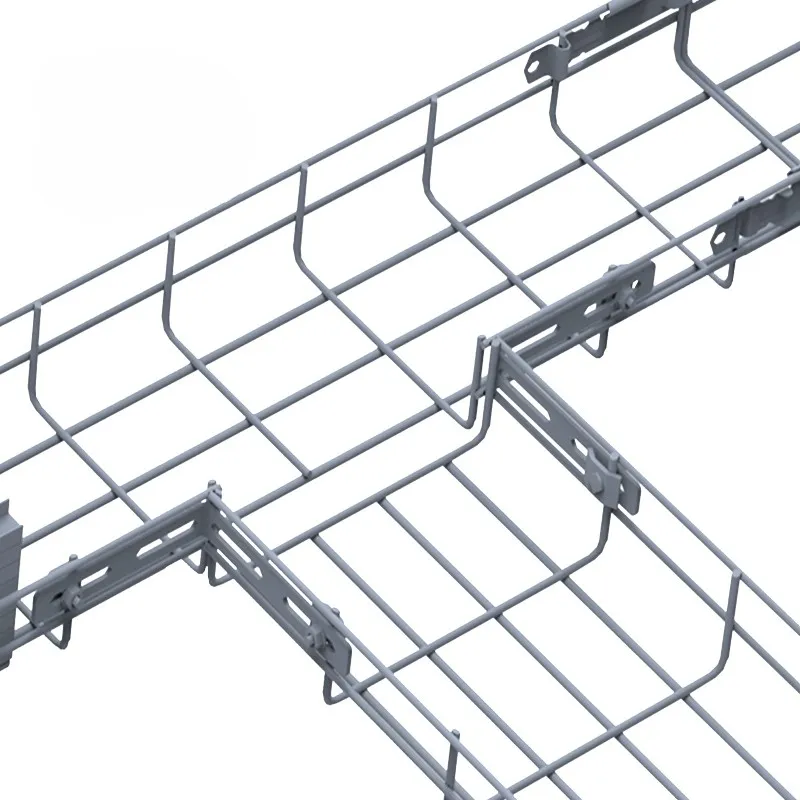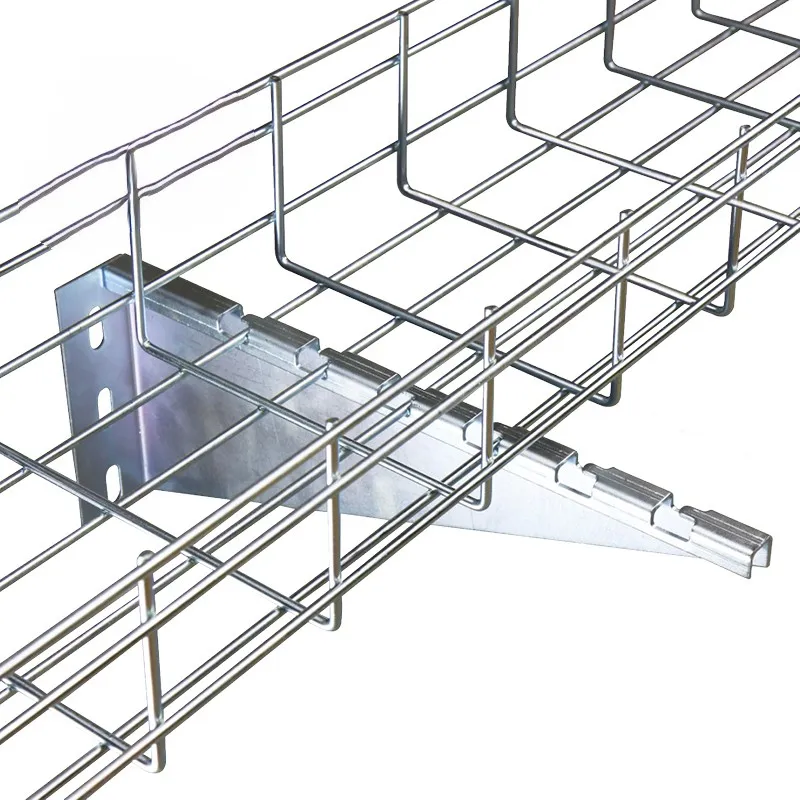Wire basket cable tray is a popular and effective solution for managing cables in various industrial, commercial, and residential settings. It offers numerous benefits, such as easy installation, flexibility, durability, and safety. However, like any other equipment or system, wire basket cable tray requires regular maintenance to ensure optimal performance, longevity, and reliability. In this article, we will provide a comprehensive guide on how to properly maintain your wire basket cable tray, including inspection, cleaning, lubrication, cable management, repair/replacement, and safety considerations.
1. Inspection:
The first step in maintaining your wire basket cable tray is to conduct regular inspections. This involves visually examining the tray for any signs of damage, wear and tear, corrosion, or other issues that could affect its functionality or safety. You should inspect the tray at least once a year, or more frequently if it is subjected to harsh environmental conditions or heavy usage. During the inspection, pay attention to the following areas:

The integrity of the wire mesh or perforated panels: Check for any gaps, tears, or deformations that could compromise the strength or stability of the tray.
The condition of the support brackets, fasteners, and connectors: Ensure that they are securely attached and free from rust, corrosion, or other defects that could affect their performance or safety.
The presence of any loose or frayed cables: Make sure that all cables are properly secured and organized within the tray, and that there are no exposed or damaged wires that could cause electrical hazards.
The accumulation of dust, debris, or other contaminants: Clean the tray regularly using a soft-bristled brush or compressed air to prevent the buildup of dirt, moisture, or other substances that could interfere with the airflow, insulation, or conductivity of the cables.
If you notice any issues during the inspection, take immediate action to address them before they escalate into more serious problems. Document any findings or observations in a maintenance log or report, and communicate them to relevant personnel or stakeholders.
2. Cleaning and Dust Removal:
Wire basket cable tray can accumulate dust, dirt, and other contaminants over time, which can interfere with the airflow, insulation, and electrical conductivity of the cables. To prevent this, you should clean the tray regularly using a soft-bristled brush or compressed air. Avoid using harsh chemicals or abrasive materials that could damage the tray or cables. You should also remove any loose or tangled cables from the tray and reorganize them neatly to improve accessibility and visibility.
When cleaning the tray, pay special attention to hard-to-reach areas, such as corners, edges, or crevices, where dirt and debris can accumulate. Use a vacuum cleaner or a blower to remove any loose particles, and wipe the tray with a damp cloth or a mild detergent solution to remove stubborn stains or grime.
3. Lubrication and Corrosion Protection:
Some components of wire basket cable tray, such as hinges, slides, and rollers, may require lubrication to ensure smooth operation and prevent rust and corrosion. Use a high-quality lubricant that is compatible with the material of the tray and cables, and apply it sparingly to avoid attracting dust and debris. You should also consider applying a protective coating or sealant to the tray to prevent moisture, chemicals, or other corrosive agents from penetrating the surface.
When lubricating the tray, make sure to apply the lubricant evenly and thoroughly, and avoid over-lubricating or under-lubricating the components. Follow the manufacturer’s recommendations for the type and frequency of lubrication, and store the lubricant in a cool, dry place away from direct sunlight or heat sources.
4. Cable Management:
Proper cable management is essential for maintaining the wire basket cable tray and ensuring the safe and efficient operation of the cables. You should label and document all cables and connections, and update the documentation whenever changes are made. You should also avoid overloading the tray with too many cables or exceeding the weight capacity of the tray. Use cable ties, hooks, or other accessories to secure the cables in place and prevent them from sagging or touching each other.
When managing the cables, make sure to follow the recommended bend radius and tension limits, and avoid sharp bends or kinks that could damage the cables or impair their performance. Use color coding or labeling to identify different types or functions of cables, and keep the cables separated and organized by application or location.
5. Repair and Replacement:
If you notice any damage or defects on the wire basket cable tray that cannot be repaired easily, you should consider replacing the affected components or the entire tray. This may involve disassembling the tray, removing the cables, and reinstalling the new tray or parts. Make sure to follow the manufacturer’s instructions and safety guidelines, and use appropriate tools and equipment. You should also test the tray and cables after the repair or replacement to ensure they are functioning properly.
When repairing or replacing the tray, make sure to isolate the affected area from the rest of the system, and use personal protective equipment (PPE) such as gloves, goggles, or respirators to prevent injury or exposure to hazardous materials. Consult with a qualified professional if you are unsure about the proper procedures or techniques for repairing or replacing the tray.
6. Safety Considerations:
Wire basket cable tray can pose several safety risks if not maintained properly, such as electrical hazards, fire hazards, or fall hazards. To minimize these risks, you should follow these safety guidelines:
Electrical safety: Ensure that all cables are properly insulated and grounded, and that there are no exposed or damaged wires that could cause electrical shocks or fires. Use caution when working near energized cables or equipment, and use appropriate PPE such as rubber gloves or mats.
Fire safety: Avoid storing flammable or combustible materials near the wire basket cable tray, and keep the tray free from any sources of ignition or heat. Install smoke detectors or fire suppression systems if necessary.
Fall safety: If the wire basket cable tray is installed at heights or in elevated areas, ensure that there are adequate fall protection measures in place, such as guardrails, harnesses, or netting. Use caution when accessing or working on the tray, and follow proper ladder or scaffold safety procedures.
Conclusion:
In conclusion, proper maintenance of wire basket cable tray is crucial for maximizing its benefits and minimizing its risks. By following these simple steps and best practices, you can keep your wire basket cable tray in good condition, extend its lifespan, and ensure the safety and reliability of your cables and systems. Remember to prioritize safety, quality, and efficiency in all aspects of wire basket cable tray maintenance, and seek professional assistance if needed. Regular inspection, cleaning, lubrication, cable management, repair/replacement, and safety considerations are essential components of a comprehensive maintenance program that can help you achieve your goals and objectives for cable management and infrastructure support. With proper maintenance, your wire basket cable tray can serve you well for many years to come.


